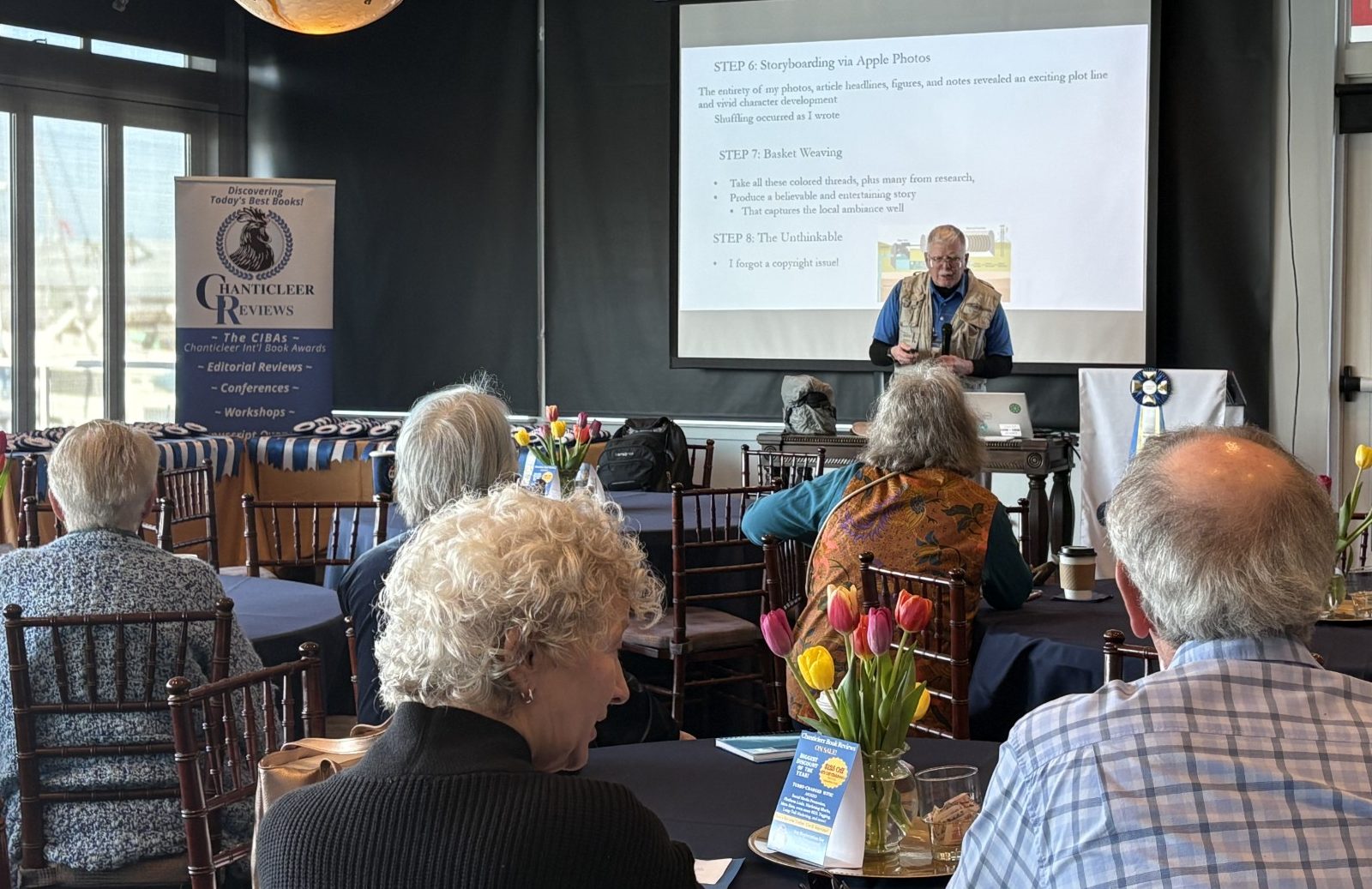|
Listen to or download this article:
|

Looking at the I&I, Harvey Chute, and Mind & Spirit Awards
There are two types of Non-Fiction that we commonly see: Narrative Non-Fiction and Prescriptive Non-Fiction.

Just what is the difference between types of Non-Fiction?
Narrative often makes the most sense, but that doesn’t mean that Prescriptive Non-Fiction deserves a bad rap. Let’s look at some definitions:
Narrative Non-Fiction:
The primary focus is story. Often a beginning, middle, and end, it stands strong with most fiction stories, with the notable difference that it is, in fact, Non-Fiction. Memoir is similar, though obviously focused on one person’s first person experience of their own life.
Prescriptive Non-Fiction:
The primary focus here is conveying a message. Narrative and writing style help convey this message in the same way it conveys theme in a Narrative Non-Fiction. The person writing must be an expert in the subject. How else do you make a full book of it?
While we’re going to focus on three different genres of Prescriptive Non-Fiction, you can always read more about it through resources like this one here.
Three Genres of the CIBAs for Prescriptive Non-Fiction

While you can see our full list of Non-Fiction Genres (including the newest for Military and Front Line Books) here, we consider our I&I, Harvey Chute, and Mind & Spirit Book Award Programs to be closest to Prescriptive Non-Fiction. The main focuses for these three Awards programs are How-To, Business & Finance, and Spirituality and Mindfulness.
There’s a good deal of overlap with the other Awards as sometimes the instructional side of a workbook takes over more than the part that looks directly at financial or spiritual welfare. However, the key here is that you learn while enjoying a book. Maybe the book is framed through someone’s personal experience, their clinical experience, or told in the form of a travelogue, but no matter what it brings you through to a new understanding by the end.
What Does Prescriptive Non-Fiction Look Like?
Examples are always best in these cases. Here are some of our favorite Non-Fiction books that we’ve reviewed recently focusing on How-To, Business & Finance, and Spirituality.
EMOTIONAL MAGNETISM: How to Communicate to Ignite Connection in Your Relationships
By Sandy Gerber

Emotional Magnetism: How to Communicate to Ignite Connection in Your Relationships is a self-help and marketing book in one—in fact, it’s a self-marketing book.
A seasoned marketing professional, author Sandy Gerber uses common elements in marketing theory to aid those who wish to enhance their communication skills and ability to get along with people around them. It’s easy to be misunderstood or unheard, and it’s even easier to be at cross-purposes, leading to frustration and animosity. But using Gerber’s SAVE technique, understanding what we mean and what we need becomes clear.
In this work, we learn what emotional magnetism is, and how well we can communicate when we learn how to harness it. We also learn about how emotional magnetism can be repelled when it’s not done right. But in order to use emotional magnetism, we must first learn what the emotional magnets are, using the acronym SAVE—short for safety (S), achievement (A), value (V), and experience (E)—and how they are reflected in our personalities.
HEALING OUT LOUD: How to Embrace God’s Love When You Don’t Like Yourself
By Sandi Brown & Michelle Caulk

Two writers – friends, and former counselor and client – combine forces to create Healing Out Loud, a dynamic book aimed at understanding and overcoming the deficits that life hands us.
Sandi Brown, a radio personality with more grit than she realizes, seeks professional help. Michelle Caulk’s therapeutic methodology perfectly suits this case. The two offer examples of wishing for and finding true mental health through the development of a remarkable communicative relationship.
Each chapter of the pair’s psychological explorations begins with a memory from Sandi, accompanied by her expanded view of incidents from childhood and beyond. These ruminations are then matched by counselor Michelle’s personal grasp of Sandi’s specific dilemmas, and well-constructed guidelines for a healing process that readers can incorporate into their own lives. Sandi, grappling with low self-esteem, was traumatized as a child when her father left her mother and brother, loudly and finally, with no explanation.
WELFARE CHEESE to FINE CAVIAR: How to Achieve Your Dreams Despite Your Upbringing
By Thomas Wideman, MBA, PMP
First Place Winner in the Harvey Chute Awards

Thomas Wideman, the author of this dynamic self-help manual, Welfare Cheese to Fine Caviar: How to Achieve Your Dreams Despite Your Upbringing, rose from poverty and dismay to a life of security and personal achievement through techniques he shares with readers who can incorporate them into their own life plans.
Wideman came from an impoverished African American family wracked by confusion, chaos, and, at times, criminality. His mother had three sons by three fathers, and he would come to know his own father only peripherally, eventually learning that the man murdered people and subsequently died in prison. The boy grew up in tough neighborhoods and ate “welfare cheese” (a block of pre-sliced heavy American cheese that supposedly melted well). Every month, making ends meet became more and more difficult. In an early chapter of this finely woven chronology, we see him taking food from trains parked along the railroad tracks and running from the authorities. In this, as in each new chapter, he speaks of confronting severe issues and finding ways to resolve them. In the case of the theft and other childhood incidents of fighting, experiencing bullies, and battling racism, he speaks of making up his mind that “my circumstances need not be my limitation.”
A math whiz, Wideman found his strengths through schoolwork, striving for A’s instead of merely accepting B’s.
GATHERING PEBBLES: Learning How to Make Your Own Chicken Soup
By David Okerlund

Inuit of the Canadian Arctic are known for creating stone structures used as navigational points and message centers for fellow travelers. Some of these directional monuments provide a spiritual connotation meant to enrich the journey.
Gathering Pebbles is David Okerlund’s own “inukshuk” of sorts, a book filled with stories, recollections, and memorable life events that have become part of his personal road map for living. Okerlund, a world-class inspirational speaker, shares his best stories to help you create your own life-path. He shares this collection of nuggets in the interest of helping others along their chosen path and hoping to encourage their own “gathering” and sharing of valuable knowledge.
Okerlund directs his writing in a casual, user-friendly style. Each of the book’s chapters is highlighted as a pebble gathered on his winding life’s path. Titles are effectively posed as questions to help draw readers into the topic at hand. Each chapter is formatted with a variable mixture of contemplative quotes, poetry, recaptured historical moments, and personal experiences, to showcase qualities such as perseverance, retaining a sense of childhood wonderment, the importance of faith, and following your dreams.
Each of these books does an excellent job navigating their genres (and their cover designs!), making it clear who they appeal to and how they can help the reader.
Have a How-To, Self-Help, or another great Non-Fiction Read that deserves recognition? Submit now to our Non-Fiction Book Awards by the end of November!
Celebrating the 2021 Winners for I&I, Harvey Chute, and the Mind & Spirit Awards!

Looking for more great reads?
Looking to up your game? Check out the traditional publishing tool that indie authors can use to propel their writing careers to new levels.










Leave A Comment